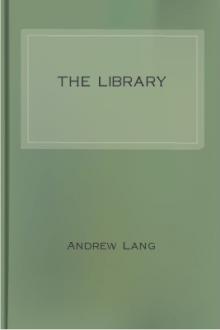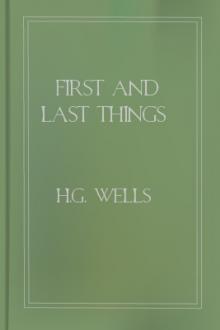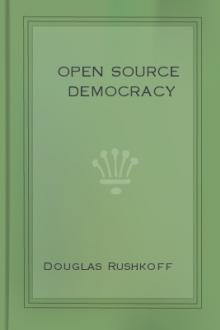The Library by Andrew Lang (i have read the book a hundred times txt) 📕

- Author: Andrew Lang
- Performer: -
Book online «The Library by Andrew Lang (i have read the book a hundred times txt) 📕». Author Andrew Lang
The bookseller’s booth is arched over, and is open at front and side. Dorimant and Cleante are looking out; one leans on the books on the window-sill, the other lounges at the door, and they watch the pretty Hippolyte who is chaffering with the lace-seller at the opposite shop. “Ce visage vaut mieux que toutes vos chansons,” says Dorimant to the bookseller. So they loitered, and bought books, and flirted in their lace ruffles, and ribbons, and flowing locks, and wide canons, when Moliere was young, and when this little old book was new, and lying on the shelves of honest Quinet in the Palace Gallery. The very title-page, and pagination, not of this second edition, but of the first of “Les Fascheux,” had their own fortunes, for the dedication to Fouquet was perforce withdrawn. That favourite entertained La Valliere and the King with the comedy at his house of Vaux, and then instantly fell from power and favour, and, losing his place and his freedom, naturally lost the flattery of a dedication. But retombons a nos coches, as Montaigne says.
This pleasant little copy of the play, which is a kind of relic of Moliere and his old world, has been ruthlessly bound up with a treatise, “Des Pierres Precieuses,” published by Didot in 1776. Now the play is naturally a larger book than the treatise on precious stones, so the binder has cut down the margins to the size of those of the work on amethysts and rubies. As the Italian tyrant chained the dead and the living together, as Procrustes maimed his victims on his cruel bed, so a hard-hearted French binder has tied up, and mutilated, and spoiled the old play, which otherwise would have had considerable value as well as interest.
We have tried to teach the beginner how to keep his books neat and clean; what men and monsters he should avoid; how he should guard himself against borrowers, book-worms, damp, and dirt. But we are sometimes compelled to buy books already dirty and dingy, foxed, or spotted with red, worn by greasy hands, stained with ink spots, or covered with MS. notes. The art of man has found a remedy for these defects. I have never myself tried to wash a book, and this care is best left to professional hands. But the French and English writers give various recipes for cleaning old books, which the amateur may try on any old rubbish out of the fourpenny box of a bookstall, till he finds that he can trust his own manipulations. There are “fat stains” on books, as thumb marks, traces of oil (the midnight oil), flakes of old pasty crust left in old Shakespeares, and candle drippings. There are “thin stains,” as of mud, scaling-wax, ink, dust, and damp. To clean a book you first carefully unbind it, take off the old covers, cut the old stitching, and separate sheet from sheet. Then take a page with “fat stains” of any kind of grease (except finger-marks), pass a hot flat iron over it, and press on it a clean piece of blotting paper till the paper sucks up the grease.
Then charge a camel-hair brush with heated turpentine, and pass it over the places that were stained. If the paper loses its colour press softly over it a delicate handkerchief, soaked in heated spirits of wine. Finger-marks you will cover with clean soap, leave this on for some hours, and then rub with a sponge filled with hot water. Afterwards dip in weak acid and water, and then soak the page in a bath of clean water. Ink-stained pages you will first dip in a strong solution of oxalic acid and then in hydrochloric acid mixed in six times its quantity of water. Then bathe in clean water and allow to dry slowly.
Some English recipes may also be given. “Grease or wax spots,” says Hannett, in “Bibliopegia,” “may be removed by washing the part with ether, chloroform, or benzine, and placing it between pieces of white blotting paper, then pass a hot iron over it.” “Chlorine water,” says the same writer, removes ink stains, and bleaches the paper at the same time. Of chloride of lime, “a piece the size of a nut” (a cocoa nut or a hazel nut?) in a pint of water, may be applied with a camel’s hair pencil, and plenty of patience. To polish old bindings, “take the yolk of an egg, beat it up with a fork, apply it with a sponge, having first cleaned the leather with a dry flannel.” The following, says a writer in “Notes and Queries,” with perfect truth, is “an easier if not a better method; purchase some bookbinder’s varnish,” and use it as you did the rudimentary omelette of the former recipe. Vellum covers may be cleaned with soap and water, or in bad cases by a weak solution of salts of lemon.
Lastly, the collector should acquire such books as Lowndes’s “Bibliography,” Brunet’s “Manuel,” and as many priced catalogues as he can secure. The catalogues of Mr. Quaritch, Mr. Bohn, M.
Fontaine, M.M. Morgand et Fatout, are excellent guides to a knowledge of the market value of books. Other special works, as Renouard’s for Aldines, Willems’s for Elzevirs, and Cohen’s for French engravings, will be mentioned in their proper place.
Dibdin’s books are inaccurate and long-winded, but may occasionally be dipped into with pleasure.
THE BOOKS OF THE COLLECTORThe easiest way to bring order into the chaos of desirable books, is, doubtless, to begin historically with manuscripts. Almost every age that has left any literary remains, has bequeathed to us relics which are cherished by collectors. We may leave the clay books of the Chaldeans out of the account. These tomes resemble nothing so much as sticks of chocolate, and, however useful they may be to the student, the clay MSS. of Assurbanipal are not coveted by the collector. He finds his earliest objects of desire in illuminated manuscripts. The art of decorating manuscripts is as old as Egypt; but we need not linger over the beautiful papyri, which are silent books to all but a few Egyptologists. Greece, out of all her tomes, has left us but a few ill-written papyri. Roman and early Byzantine art are represented by a “Virgil,” and fragments of an “Iliad”; the drawings in the latter have been reproduced in a splendid volume (Milan 1819), and shew Greek art passing into barbarism. The illumination of MSS. was a favourite art in the later empire, and is said to have been practised by Boethius. The iconoclasts of the Eastern empire destroyed the books which contained representations of saints and of the persons of the Trinity, and the monk Lazarus, a famous artist, was cruelly tortured for his skill in illuminating sacred works. The art was decaying in Western Europe when Charlemagne sought for painters of MSS. in England and Ireland, where the monks, in their monasteries, had developed a style with original qualities. The library of Corpus Christi at Cambridge, contains some of the earliest and most beautiful of extant English MSS. These parchments, stained purple or violet, and inscribed with characters of gold; are too often beyond the reach of the amateur for whom we write. The MSS. which he can hope to acquire are neither very early nor very sumptuous, and, as a rule, MSS. of secular books are apt to be out of his reach.
Yet a collection of MSS. has this great advantage over a collection of printed books, that every item in it is absolutely unique, no two MSS. being ever really the same. This circumstance alone would entitle a good collection of MSS. to very high consideration on the part of book-collectors. But, in addition to the great expense of such a collection, there is another and even more serious drawback.
It is sometimes impossible, and is often extremely difficult, to tell whether a MS. is perfect or not.
This difficulty can only be got over by an amount of learning on the part of the collector to which, unfortunately, he is too often a stranger. On the other hand, the advantages of collecting MSS. are sometimes very great.
In addition to the pleasure—a pleasure at once literary and artistic—which the study of illuminated MSS. affords, there is the certainty that, as years go on, the value of such a collection increases in a proportion altogether marvellous.
I will take two examples to prove this point. Some years ago an eminent collector gave the price of 30 pounds for a small French book of Hours, painted in grisaille. It was in a country town that he met with this treasure, for a treasure he considered the book, in spite of its being of the very latest school of illumination. When his collection was dispersed a few years ago this one book fetched 260 pounds.
In the celebrated Perkins sale, in 1873, a magnificent early MS., part of which was written in gold on a purple ground, and which was dated in the catalogue “ninth or tenth century,” but was in reality of the end of the tenth or beginning of the eleventh, was sold for 565 pounds to a dealer. It found its way into Mr. Bragge’s collection, at what price I do not know, and was resold, three years later, for 780 pounds.
Any person desirous of making a collection of illuminated MSS., should study seriously for some time at the British Museum, or some such place, until he is thoroughly acquainted (1) with the styles of writing in use in the Middle Ages, so that he can at a glance make a fairly accurate estimate of the age of the book submitted to him; and (2) with the proper means of collating the several kinds of service-books, which, in nine cases out of ten, were those chosen for illumination.
A knowledge of the styles of writing can be acquired at second hand in a book lately published by Mr. Charles Trice Martin, F.S.A., being a new edition of “Astle’s Progress of Writing.” Still better, of course, is the actual inspection and comparison of books to which a date can be with some degree of certainty assigned.
It is very common for the age of a book to be misstated in the catalogues of sales, for the simple reason that the older the writing, the plainer, in all probability, it is. Let the student compare writing of the twelfth century with that of the sixteenth, and he will be able to judge at once of the truth of this assertion.
I had once the good fortune to “pick up” a small Testament of the early part of the twelfth century, if not older, which was catalogued as belonging to the fifteenth, a date which would have made it of very moderate value.
With regard to the second point, the collation of MSS., I fear there is no royal road to knowing whether a book is perfect or imperfect.
In some cases the catchwords remain at the foot of the pages. It is then of course easy to see if a page is lost, but where no such clue is given the student’s only chance is to be fully acquainted with what a book OUGHT to contain. He can only do this when he has a knowledge of the different kinds of service-books which were in use, and of their most usual contents.
I am indebted to a paper, read by the late Sir William Tite at a meeting of the Society of Antiquaries, for the collation of “Books of Hours,” but there are many kinds of MSS. besides these, and





Comments (0)